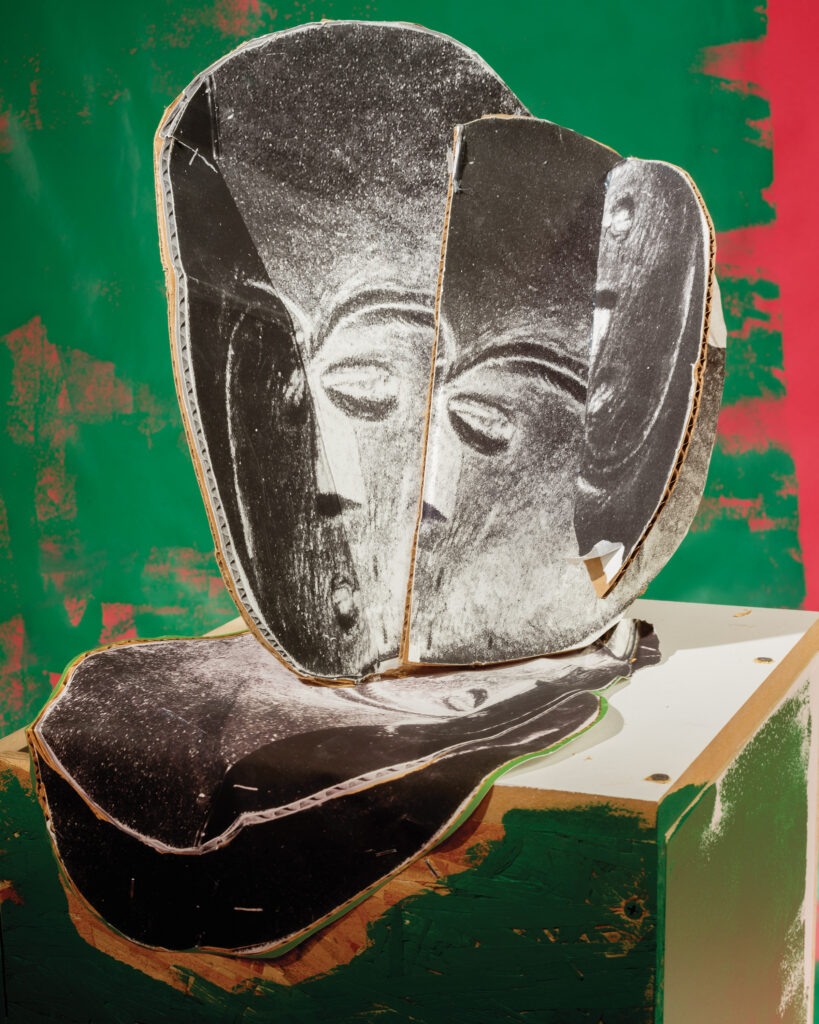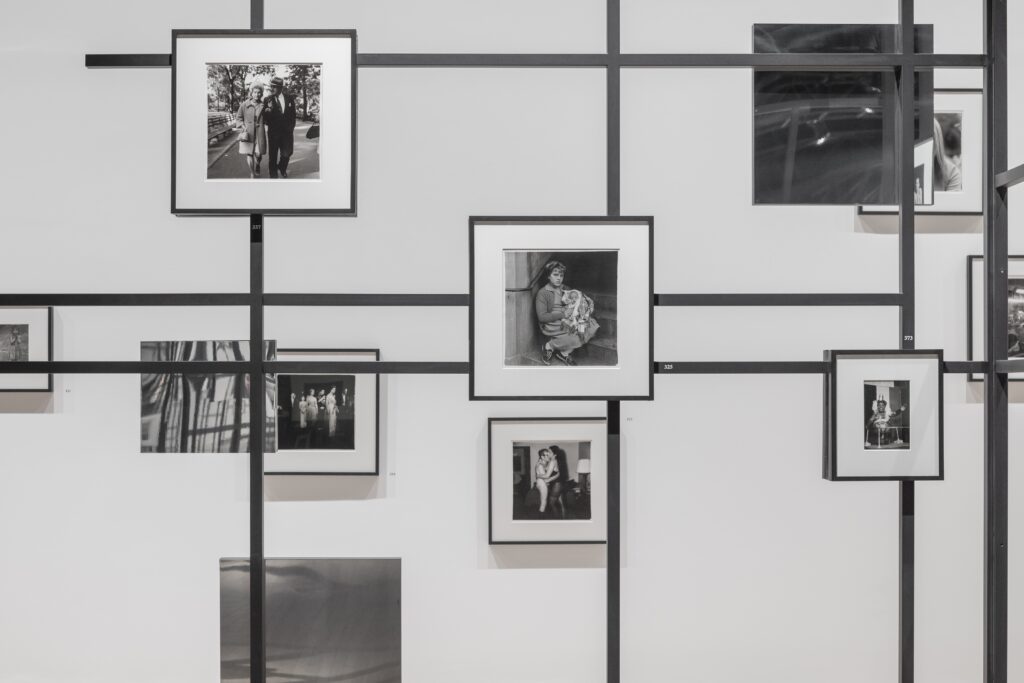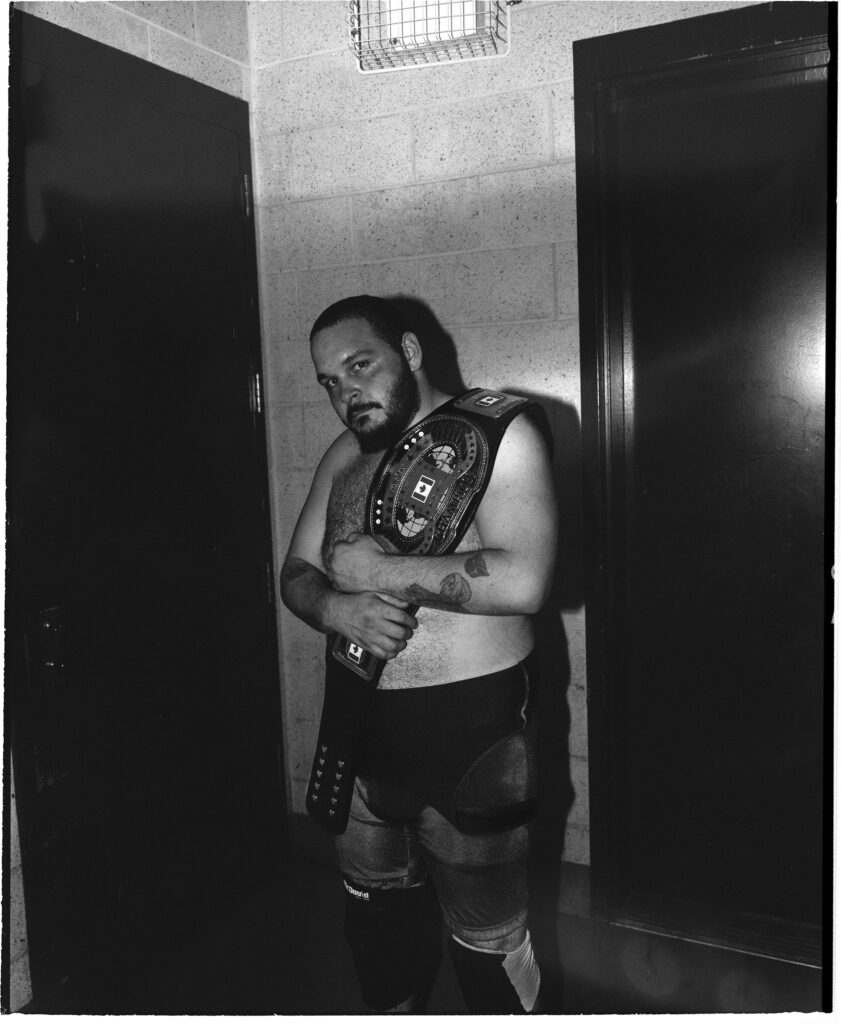Interviews
Juergen Teller on Life, Love, and Three Decades in Fashion
On the occasion of his career-spanning exhibition in Paris, the influential photographer reflects on the boundaries between art and commerce.

Over the last thirty years, Juergen Teller has been at the vanguard of fashion photography. His work resists the idea of fashion as the projection of a polished ideal, favoring objective clarity to shine a light through the smoke and mirrors of promotion and commerce. He has shaped the advertising campaigns of visionary designers such as Helmut Lang, Phoebe Philo (for Celine), JW Anderson (including his work for Loewe), and Vivienne Westwood, as well as his memorable editorials for fashion magazines. Running parallel is Teller’s ongoing commitment to producing photobooks, in a range of sizes and on a range of subjects, which often irreverently refer back to Teller himself, his personal life, and his own body.
This season, Teller’s work is the subject of a major exhibition at the Grand Palais Éphémère, Paris, the cavernous temporary space in the shadow of the Eiffel Tower that replaces the historic Grand Palais, currently under renovation. The exhibition, curated by Thomas Weski, will then travel to the Milan Triennale. By placing Teller’s fashion images into dialogue with his personal projects and published works, the show expresses the full vitality of Teller’s life and artistic world. Some of his best photographs call into question the exact boundaries between the commercial and the private, examining the crossroads of what takes place on set and what happens off to the side. Alistair O’Neill recently met the photographer at his London studio—an award-winning space designed by the British architects 6a—where they spoke among the many maquettes and display tests for the show.


Alistair O’Neill: Your exhibition at the Grand Palais Éphémère is large, and the scale of the space is a challenge in itself. There’s also a catalog and four additional publications, right?
Juergen Teller: Four other artist books, yeah.
O’Neill: Fantastic.
Teller: I’ve made work specifically for the exhibition, and I would say it’s my universe of what I want to show. The title is i need to live. We came to the title because of the way that I planned the exhibition in my head. It starts with a photograph taken by my father of me as a baby. And this is followed by my father’s suicide, represented by a newspaper article with a photograph of the car crash. And then there’s my mother, and then there’s me. It’s not really chronological, but there is a thread from the beginning, and it guides you through it.
But very early on, there will be some pictures of Dovile [Drizyte, Teller’s partner in life and business], which brings in the now within the center of the show. It’s very personal and ends with a series we did called The Myth (2022). For me, this project is very, very special and very beautiful and very romantic. It’s something meaningful, something you can’t photograph.
O’Neill: You said there’s a thread that runs through the exhibition. Is it this idea of a life force in the air?
Teller: Yes. There’s this religious celebration we did in Sicily just now for our first child together. It’s basically this new ball of life. And it means I need to live, I need to be there, I want to be there. And it is the opposite of what my father did. That’s the idea about the whole thing. And then, surrounding this central core, there are different projects that I did and different photographs of people who mean a lot to me, who I have collaborated with. There will be commercial work in it as well as videos. I mean, the Grand Palais exhibition is huge. It’s huge.
We developed it with 6a architects who did my building here. I really like Tom [Emerson] and Steph [Stephanie Macdonald] a lot. We’re friends, and we talk about things, and it was very clear to me that I wanted to ask them to help me with it because the space is like an empty shell without rooms. We came up with something that I’m really proud of.
Aperture Magazine Subscription
0.00
O’Neill: They’re really good exhibition designers. The Disobedient Bodies show they did with JW Anderson in 2017 at the Hepworth was fantastic. They designed these fabulous curtain walls, and they used dead-stock fabric from JW Anderson, and they made rooms within rooms because of the very large spaces. It was really clever. Your studio is a great example of their style. I’m happy to hear that you’re working with them again.
Teller: Yeah, and that’s the wall [Teller points toward a large, plywood, self-supporting wall section]. It’s four meters, eighty high and four hundred meters long altogether and will feature a lot of new work. It will be very personal. I will also have fifty vitrines and there will be different facets of my work that I’ll curate in them. New configurations.
O’Neill: Is this about lending weight to printed matter because that’s something you consider important to how your work is communicated?
Teller: Yes, very, very much so. Sometimes it’s just an example of the Marc Jacobs advertising and how it looks. And sometimes, within the vitrine, I will put objects in it.
O’Neill: So, there will be tear sheets, double-page spreads, and magazines as well as the many photobooks, exhibition catalogs, and monographs you published over the years, but also personal possessions and mementos. They’re object-orientated narratives in a way?
Teller: Yes, that’s right.
O’Neill: Is it your intention to let each vitrine display visually breathe so as not to look congested?
Teller: Yes, though some of the vitrines are fuller.

O’Neill: It seems that, at times, the space and borders around your images, as in your Marc Jacobs advertising campaign, are quite important. The white space that surrounds what is a relatively small printed image in relation to the size of the page magnifies its visual impact and intensifies the color. And you can also see this attention to detail in the layouts of your publications.
Teller: Yes, and I am also doing a new version of the handbag book [Juergen Teller: Handbags]. Since I published that book, in 2019, when I had the museum exhibition in Naples, I’ve photographed lots more handbags. There will be a new book [Juergen Teller: More handbags], but both old and new images will be displayed together on a huge wall.
O’Neill: Great, because I really like what you say in that book about moving on from amassing pictures of models, as in your 1999 book, Go-Sees, to amassing photographs of handbags.
Teller: When I started in fashion photography, I worked with stylists and fashion designers who all thought that the last thing they wanted in the picture was a handbag.
It was all about the clothes, the person, and the mood, to portray a certain coolness or whatever. And nowadays, in every fashion ad, there’s a handbag. Everywhere is a handbag. And this is basically what sells and drives the industry alone.
I’ve made work specifically for the exhibition, and I would say it’s my universe of what I want to show.
O’Neill: That’s really to do with the luxury conglomerates and where they see their profit margin. But it has upended the industry. If you look at Maria Grazia Chiuri and Pierpaolo Piccioli, two of the biggest designers in contemporary fashion, they were accessories designers to start with, and that’s really important to the work they now produce. So, apart from the wall of handbags, will the exhibition also deal with your fashion work in full?
Teller: Yes, yes, yes, yes.
O’Neill: Good, I’m glad.
Teller: And quite proudly so.
O’Neill: Yes, I think it should be unashamed. I really do. Because your work has always expressed itself on a broader canvas. Your fashion photographs never appear as contained exercises in style, as you are often keen to inject a sense of absurdity into them, to expose the unreality of the conditions in which they are made. And while your personal projects reflect the wider sense of your life as it is lived, you remain open about how your commercial work drives it all. You continue to be incredibly prolific as a fashion photographer. Does this work still inspire you?
Teller: Simply speaking, yes. Of course, at certain times you get frustrated, and you get bored of it. But it is just, frankly, exciting to work with somebody like JW Anderson, or Anthony Vaccarello, or whoever the good designer is at that moment.


O’Neill: It seems that the creative conversation is an important driving force for your photography. You choose to work with certain designers you respect or want to speak with.
Teller: I think I only choose people when I have an instinct or feeling that they understand me. Also, I want to have a relationship that is ongoing, not just a one-off. The excitement of working this one time together, and then, this brings you another idea, and it goes further. That’s what I find interesting.
O’Neill: You’ve also been quite loyal to the magazines that you’ve published in. There was a period where you were only publishing in The Face and i-D, and in more recent years, you’ve published consistently in System. Is this a similar kind of relationship?
Teller: Yes. But in the beginning, when I’m approached, I’m thinking, Not really . . . do I really . . . really? And then, they explain an idea to me, and I’ll think, maybe they’re right . . . maybe that’s an adventure. It’s good to be doubtful and think that it could be jumping into the cold water and things could go wrong. Sometimes things don’t show their advantage immediately.
O’Neill: One thing that characterizes the work you’ve done in System is the extended editorial. This is a format that you’ve done before in Arena Homme + or Pop, but in System, it has a different feel.
Teller: In System, it’s restricted to the system of fashion. In the other magazines, it’s entirely my own universe. And, I think, that’s the difference. I like these certain restrictions of having to deal with something commercial, which normally I wouldn’t necessarily work with. But there’s something interesting about that, and I’m happy to explore.
O’Neill: Your photographs of Miuccia Prada in her office are a perfect example. It’s such a great meeting of your world and her world, in terms of what you picked up on when you were photographing. I really love the detail of that Miu Miu shoe that she’s wearing and the close-ups of her feet. That image got me asking, well, what does desire in a Teller photograph look like? And I thought, that is a good example. Another one is your portrait of Roy Anthony Brown in Hydra.
Teller: It’s quite interesting because when you start at the beginning of each photograph I take, it’s already there, the desire to take that photograph.
O’Neill: Your desire or their desire?
Teller: My desire.
O’Neill: Well, what is interesting about those two images is that the desire is so closed off, it’s almost their desire only. It’s not yours, or that of the person looking at it.
Teller: Right.
O’Neill: But you recognize it in that moment?
Teller: Yes.
O’Neill: That’s a rare skill. Not everyone picks up on those kinds of things.
Teller: You’re right about that.


All photographs © the artist
O’Neill: I also notice that in a lot of your work you conjure desire in an image by turning the scale, or the volume, up. To call this graphic, in terms of quality of line or kinds of shapes, is a bit reductive. Even though this approach might look brash, it’s actually quite sophisticated in terms of what it’s trying to call attention to, or how it amplifies how people look at things.
Teller: It’s very direct, I guess.
O’Neill: Visual directness is something you’ve spoken about before in terms of your German identity and other German image makers you admire, such as the filmmaker Rainer Werner Fassbinder or the photographer August Sander. But when you bring directness in relation to desire, it becomes quite unexpected. It makes me think of those monumental prints of Vivienne Westwood in your 2013 exhibition Woo! at the Institute of Contemporary Arts, London. Are they going to be at the Grand Palais?
Teller: The same size.
O’Neill: Fantastic.
Teller: Yeah.
O’Neill: Such impact.
Teller: Vivienne came to see the show, and then, either somebody from her family, or Andreas [Kronthaler], her husband, or somebody else, I can’t quite recall, said something like, “Do you mind that they’re so big?” And she said, “They could be bigger.” The way she said it, it was just genius.
O’Neill: Because they’re bigger than life-size, aren’t they?
Teller: Yes, yes. They’re very, very big.
O’Neill: You continue to live in London. What is it about the city that resonates with you?
Teller: I feel like people leave you alone to be how you want to be. There are so many good people here and good opportunities to do things. And it’s very international. And you are in the heart of Europe. But I have to say, since Brexit, it’s been a bit different. The whole political climate, and how expensive things are here, that’s just been horrific, really.
O’Neill: I think it’s becoming much harder for London to make a claim to being a creative city because creatives can’t afford to be here anymore.
Teller: Yeah.
O’Neill: But you will continue to stay here?
Teller: I find Monaco visually really exciting, but I would probably get bored there.
This interview originally appeared in Aperture, issue 253, “Desire.” Juergen Teller, i need to live is on view at the Grand Palais Éphémère, Paris, December 16, 2023–January 9, 2024.










